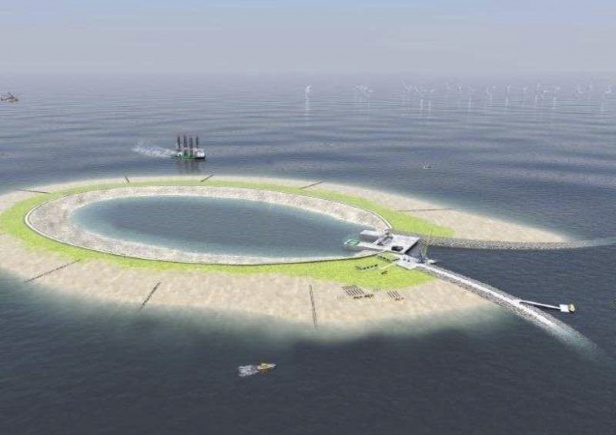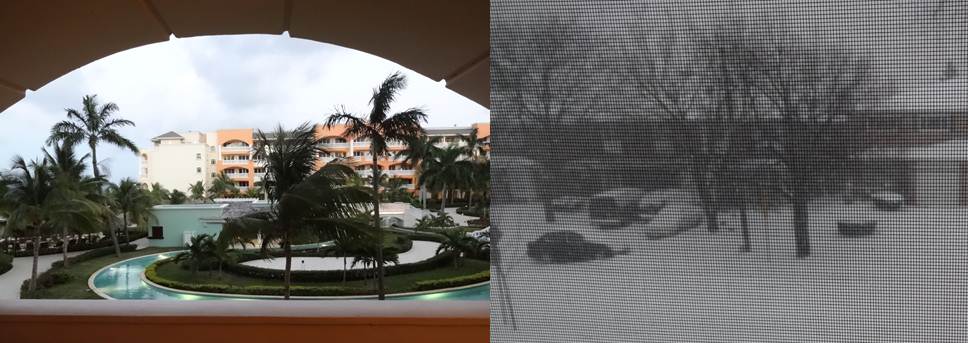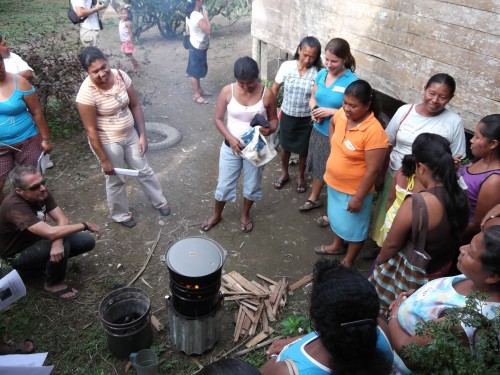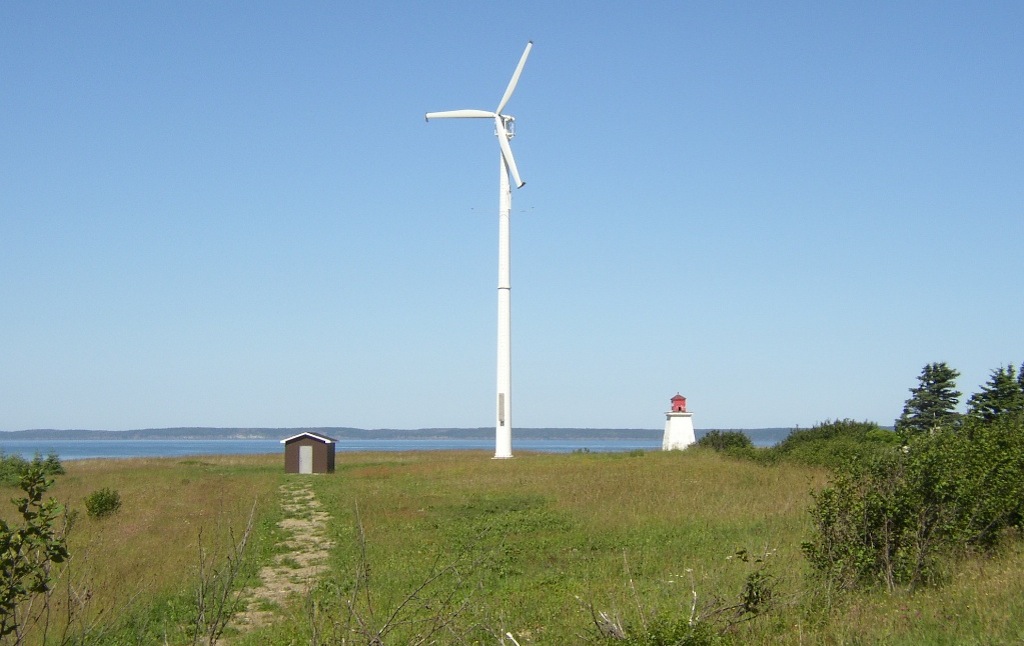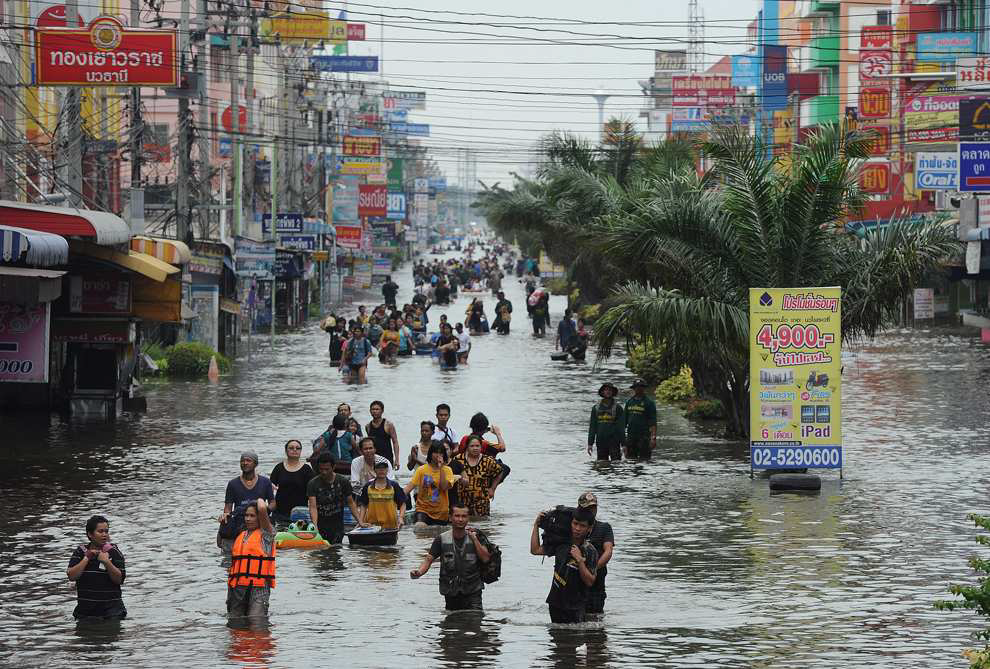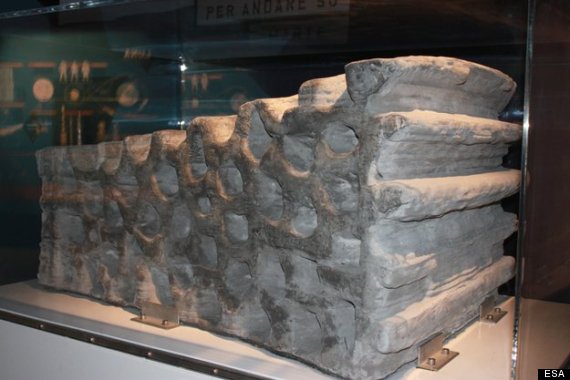Last Friday I was sitting on a balcony in Jamaica with the sound of the sea and reggae in the background. Today as I look out my window here in Toronto we are experiencing a winter storm that will dump 40 centimeters (up to a foot-and-a-half) of snow on the city. You can see the before and after pictures below. The one on the right makes you want to go into hibernation or get on a plane and get out of here for the rest of the winter.
But while I was away and during this week many new and interesting headlines appeared and here are the ones that caught my eye.
- Belgium Building Artificial Island in North Sea to Store Excess Wind Power;
- New Low Tech Cookstove Technology Could Save Millions of Lives;
- Jamaica Looks to Wind Turbines Developed by a Nova Scotia Company;
- Thailand Develops Mobile Unit for Making Floodwater Drinkable;
- Europeans Look at 3D Printing a Lunar Base.
Belgium Plans to Store Wind Energy on an Offshore Island
A proposal by a member of the Belgian cabinet calls for the building of an artificial island atoll 3 kilometers (less than 2 miles) from the coastline that would become a storage depot for excess energy generated from wind turbines. Belgium currently generates 1 Gigawatt of the country’s overall capacity using wind.
The idea would be to use energy generated by wind turbines at off peak periods to pump water into a 30-meter (about 100 feet) deep reservoir lying about 15 meters (about 50 feet) above sea level in the centre of the island and then release the water in peak periods to drive turbines generating 300 Megawatts of electricity.
The rationale – pumped hydro represents a very cheap form of energy storage costing about $100 per kilowatt-hour, far less than battery, pumped air and other current storage technologies that can be mated to wind. If further study leads to a green light for this project it will help Belgium in its goal to transition away from nuclear power by 2025.
Low Tech Cookstove Technology a Potential Lifesaver
Almost 3 billion people today cook using open fires both in and outdoors. This is a major contributor to people dying every year from asthma and other respiratory diseases. The World Heatlth Organization calculates that number at 3.5 million. That’s more deaths than the combined total from malaria and HIV/Aids. Cooking smoke from these ovens poses a greater risk than death from poor sanitation and water.
SeaChar.org is a not-for-profit organization located in Seattle, Washington, and is the inventor of the Estufa Finca, a micro-gasifier farm stove that is inexpensive and easy to produce in the Developing World. The Esutfa Finca, seen in the picture below can use many kinds of fuel including seeds, twigs, shredded wood chips, rice husks, in fact, any organic material that can be pelletized or made into briquettes.
The stoves are highly efficient. Even the smoke gets burned. The byproduct of combustion is biochar which gets put into the soil improving water retention and crop yields. Biochar also has commercial value. The output of one stove yields $15-20 per month in potential income. That’s a lot of money for a family in places like Kenya or Costa Rica where the stove is being tested.
Jamaica Looks to Wind Turbines for Renewable Clean Energy
Having spent a day driving through parts of Jamaica last week I was astonished to see how few homes and businesses were equipped with passive solar or photovoltaic arrays. Nor did I see any wind turbines despite the fact that the wind blew quite reliably every day we were on the island. It would seem natural in a tropical country that gets as many sunny days as Jamaica, and experiences steady winds from the Caribbean, that renewable energy would be part of the energy mix. But alas that has not been the case. Today Jamaica, which has no domestic coal, oil or natural gas reserves, gets 95.9% of its electricity from power plants burning diesel imported from Mexico and Venezuela. The balance of generated electricity gets produced using combustible biomass.
It appears, however, that the winds of change may soon alter the energy mix for the island nation. A Nova Scotia-based company, Seaforth Energy, recently signed a memorandum of understanding to build and setup AOC 15/50 wind turbines on Jamaican farm sites. You can see one of these turbines in the picture below.
The initiative is called Clean Energy for Jamaican Farmers and will provide power from wind energy at a fraction of the current cost. It is expected that Canadian, Jamaican and international financing will underwrite the initiative beginning Jamaica’s transition from imported fossil fuel dependency to energy independence using renewable sources.
Thailand Develops Mobile Unit for Making Floodwater Drinkable
In 2011 Thailand suffered the country’s worst natural disaster since the 2004 Indian Ocean earthquake-tsunami. The annual monsoon which normally induces flooding, in 2011 combined with a tropical storm causing an unprecedented rise in the country’s many river basins. Flooding began in July and persisted until mid-January 2012. Over 13 million in the country were affected and 815 lost their lives. In addition the rising water impacted drinking water sources creating an additional crisis.
Researchers at the National Nanotechnology Center (NANOTEC) decided to develop a made-in-Thailand solution, a solar-powered water purification system that could be carried by boat or truck to anywhere where freshwater sources were compromised. Called the Solar Operating System or SOS, it produces 200 liters of drinking water per hour when the Sun is out. The unit contains a ceramic filter with silver nanoparticles. Setup takes only a few minutes. Watch an SOS in action by clicking here.
The European Space Agency Plans To Build a Moon Base Using 3D Printing
With a 3D printer and simulated lunar regolith, the European Space Agency (ESA) is testing the feasibility of constructing entire structures on the Moon’s surface. ESA has contracted suppliers to design domed inflatable structures featuring cellular honeycombed walls capable of withstanding micrometeorites and cosmic radiation and suitable for human habitation.
The printing technology is the Monolite D-Shape 3D printer, a robotic building system that uses a variety of terrestrial materials to construct buildings from 3D CAD software. For the test simulated regolith was mixed with magnesium oxide which then turned into a paper-like material. When combined with a binding salt it solidified making it as hard as stone. The picture below is the end result, a 1.5 ton building block consisting of hollow closed cells combining strength with reduced weight.
A Postscript
As much as I enjoyed my Jamaican holiday I am happy to be back once again sharing with you all the amazing discoveries that humans are making as we progress through the 21st century. It’s great to have you along for the ride and I look forward to your questions and comments. Thanks for dropping by.
– Len Rosen
